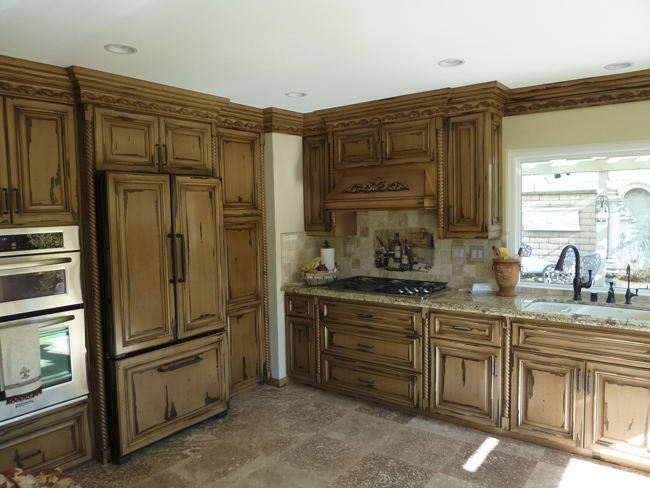The following Dos and Donts of Cabinet Refinishing
Restoring the kitchen cabinetry can be a fantastic way to refresh your home without having to spend the hefty price tag of a full remodel. If you want to update an outdated look or simply apply your cabinets a fresh coat of paint or stain, understanding the do's and don'ts of kitchen cabinet refinishing is essential for achieving professional results. Using the right technique, you can turn your kitchen into a beautiful area that shows your personal style.
Nonetheless, the process can be intimidating if you are not familiar with the techniques and materials required. Starting with choosing the perfect finish to ensuring adequate preparation and application, every step plays a crucial role in the outcome. This article will guide you through the important tips and common pitfalls to avoid, helping you navigate your refinishing project with assurance and originality.
Key Do's for Effective Cabinet Refinishing
When initiating on a kitchen cabinet refinishing project, it is crucial to set up your environment thoroughly. Commence by removing all cabinet doors and hardware, like knobs and hinges, to create a clean surface for refinishing. This step not only makes sure that every part of the cabinets is accessible but also protects against any damage to surrounding areas. Additionally, shield nearby surfaces with drop cloths or plastic sheets to guard them from dust and splatters during the refinishing process.
Properly preparing the cabinets before you start refinishing is necessary for achieving a smooth and even finish. Use a cleaner to get rid of any built-up grease, grime, or sticky residue. Once you've cleaned, sand the surfaces lightly to create a finish that allows the new finish to adhere better. Pay special attention to corners and edges, as these areas can often be neglected but greatly affect the final appearance if not properly addressed.
Selecting the right finish for your cabinets is crucial to a favorable refinishing project. Consider using a high-quality paint or stain specially formulated for cabinets, as these products often include durable ingredients that resist chipping and wear. Additionally, applying a safeguarding topcoat can enhance the longevity of the finish, making it easier to maintain over the long run. Take the time to test finishes on a small area before fully dedicating, ensuring you get the desired style for your kitchen.
Common Don'ts to Steer Clear During the Process
One frequent mistake in cooking cabinet refinishing is skipping the prep work. Many property owners underestimate the importance of thorough cleaning and sanding the surfaces before applying any paint or finish. Overlooking this step can lead to poor adhesion, resulting in a finish that flakes or wears off over time. Always confirm you properly clean the cabinets and sand them to establish a smooth surface for refinishing.
A further typical error is selecting the wrong type of paint or finish. Not all paints are appropriate for kitchen cabinets, especially in a high-use area where moisture and heat are prevalent. Using typical wall paint can result in an inconsistent finish or wear under kitchen conditions. Instead, select products specifically designed for cabinets, as they offer superior durability and a smoother application.
Lastly, don’t rush the drying time. After putting on the paint or finish, it may be tempting to accelerate the process by applying extra coats too quickly. However, doing so can lead to a sticky surface and irregular texture. Always allow adequate time for each coat to dry entirely before proceeding, making certain a refined look and long-lasting results.
Suggestions for Obtaining a Refined Look

To achieve a polished finish when updating your kitchen cabinets, appropriate surface prepping is crucial. Start by removing all hardware, doors, and drawers to access every part of the cabinet surfaces. Wash the wood meticulously using a cleaning agent to get rid of any grease or grime that has accumulated over time. Abrade the surfaces gently to create a gritty surface that will help the new finish stick better. Make sure to patch any dings or marks with wood filler, allowing it to cure completely before sanding it smooth.
Opting for the suitable finish is also crucial for a polished look. Opt for premium paint or stain that is specially made for cabinetry. When using paint, consider using a sprayer for a sleek coat, or try a foam roller and brush technique to lessen brush marks. Be Diamond Spray Finishers and put on thin coats, allowing adequate drying time between each layer. This method not only enhances the durability of the finish but also enriches the overall appearance of your cabinets.
In conclusion, after your cabinets have been refinished and are fully cured, put back all hardware and doors carefully. Make sure to attach hinges and handles that complement your new finish for a unified look. To protect your newly refinished cabinets, ponder applying a clear topcoat for added durability. This supplementary layer will help shield against scratches and wear, making sure your kitchen cabinets maintain their beautiful appearance for seasons to come.